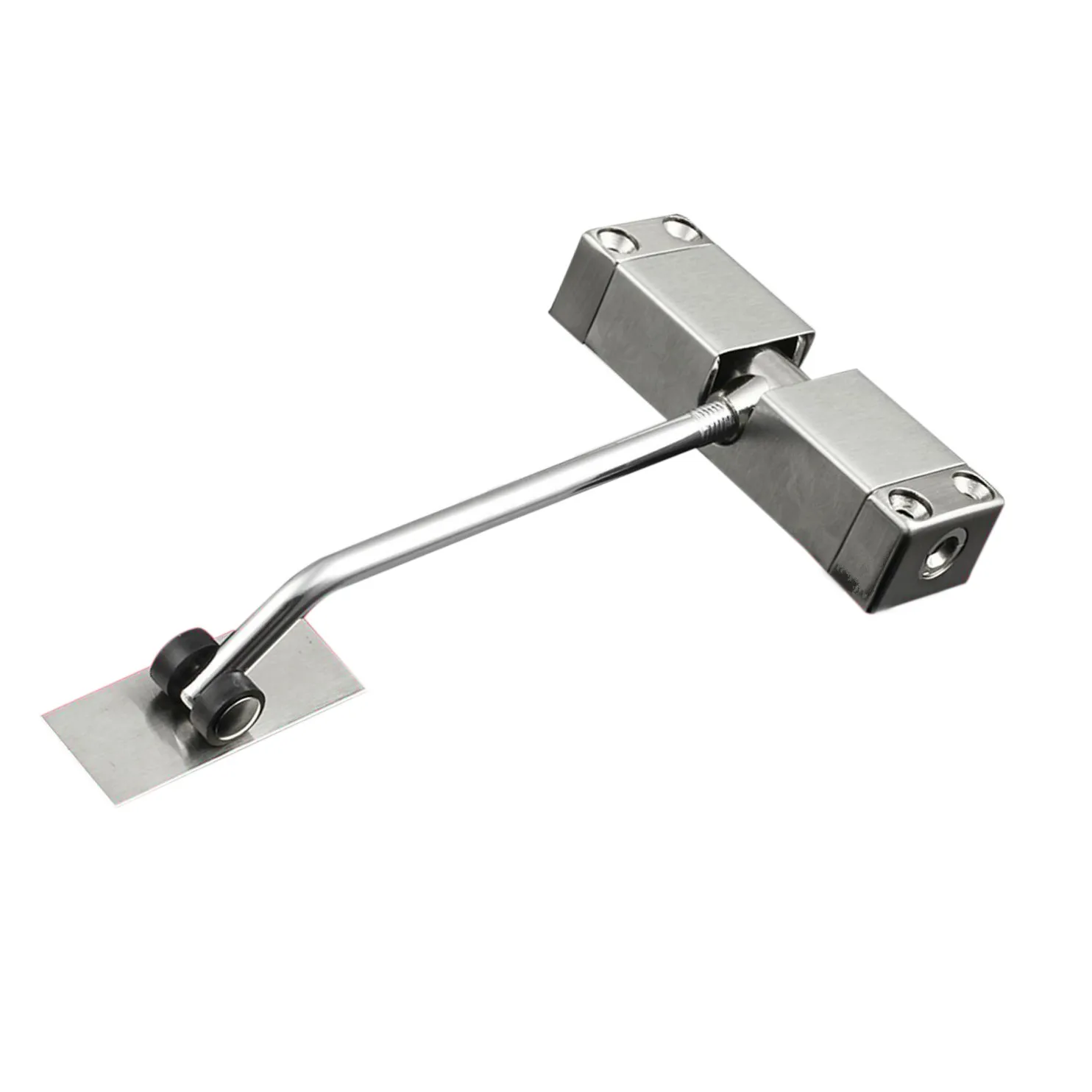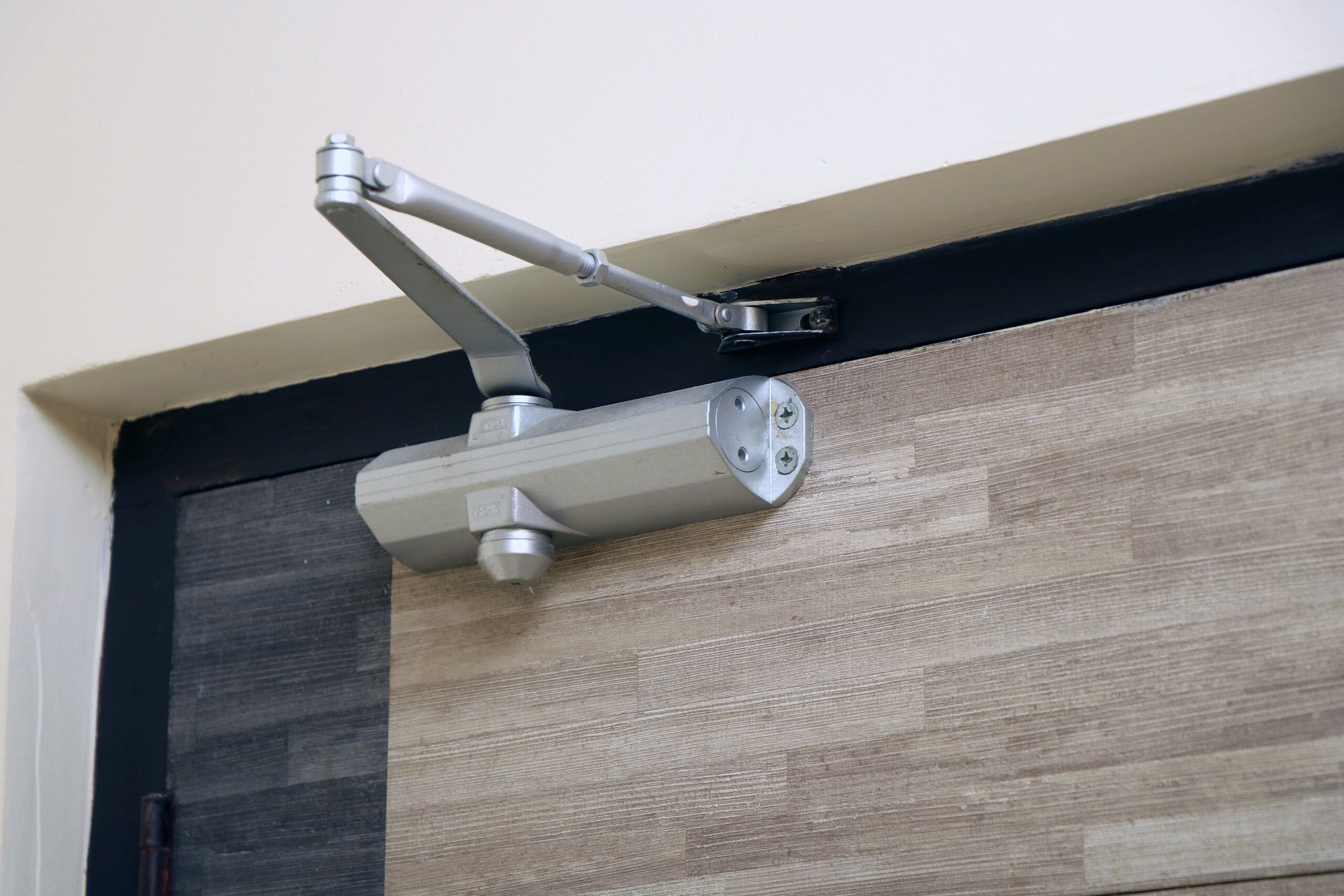Types of Kitchen Cabinet Auto Door Closers
Auto door closers offer a convenient and elegant solution for keeping kitchen cabinets neatly closed. Several mechanisms achieve this, each with its own set of advantages and disadvantages. Understanding these differences is crucial for selecting the right closer for your specific needs.
Hydraulic Auto Door Closers
Hydraulic closers utilize a piston and oil mechanism to control the closing speed. The oil resists the movement of the piston, providing a smooth and controlled closing action. They are generally durable and offer adjustable closing speeds, allowing you to fine-tune the pace at which the door closes. However, they can be slightly more expensive than other types and are susceptible to temperature fluctuations, potentially affecting their performance in extreme heat or cold.
Pneumatic Auto Door Closers
Pneumatic closers use compressed air to regulate the closing speed. They typically offer a quieter operation than hydraulic closers and are often less expensive. However, their closing speed is less easily adjustable, and they may not be as durable as hydraulic systems over the long term. Additionally, potential leaks in the air chamber can impact their effectiveness.
Magnetic Auto Door Closers
Magnetic closers employ magnets to gently pull the cabinet door closed. These are the simplest and least expensive option, usually offering a very quiet and smooth closing action. However, their closing force is relatively weak, making them unsuitable for heavier doors or cabinets. They are also less adjustable than hydraulic or pneumatic closers.
Installation Methods for Cabinet Auto Door Closers, Kitchen cabinet auto door closer
The installation method varies depending on the type of closer and the cabinet design. Generally, it involves attaching the closer mechanism to the cabinet door and the cabinet frame. Precise instructions are usually provided with the specific product. However, a general approach is Artikeld below. Note that safety precautions should always be followed when working with tools and installing hardware.
| Step | Description | Tools Required | Notes |
|---|---|---|---|
| 1 | Measure and mark the locations for mounting the closer on the door and cabinet frame. Ensure proper alignment for smooth operation. | Measuring tape, pencil | Accurate measurements are crucial for proper function. |
| 2 | Pre-drill pilot holes at the marked locations to prevent wood splitting. | Drill with appropriate drill bit | Use a drill bit slightly smaller than the screws provided with the closer. |
| 3 | Attach the closer mechanism to the door and cabinet frame using the provided screws. | Screwdriver | Tighten the screws securely but avoid over-tightening. |
| 4 | Adjust the closing speed according to the manufacturer’s instructions. | Screwdriver (potentially) | This step may involve turning a screw or adjusting a dial on the closer. |
| 5 | Test the operation of the closer to ensure smooth and controlled closing. | None | Adjust the closing speed further if needed to achieve optimal performance. |
Choosing an Auto Door Closer Based on Cabinet Specifications
Selecting the appropriate auto door closer depends on several factors: cabinet weight, door size, and desired closing speed. Heavier doors require closers with greater closing force. Larger doors generally necessitate closers with a larger capacity. The desired closing speed is a matter of personal preference; some prefer a slower, gentler close, while others prefer a faster closure.
Consider the following: A heavier, larger door will require a hydraulic closer with adjustable speed control for optimal performance. A lighter, smaller door might suffice with a magnetic or pneumatic closer.
Installation and Maintenance of Auto Door Closers

Installing and maintaining your kitchen cabinet auto door closers correctly ensures smooth, quiet operation and extends their lifespan. Proper installation requires careful measuring and drilling, while regular maintenance involves cleaning, lubrication, and occasional part replacement. Neglecting these aspects can lead to premature wear and tear, resulting in noisy operation or even complete failure.
Installing a Hydraulic Auto Door Closer
The installation process for a typical hydraulic auto door closer involves several key steps. Accurate measurements and careful drilling are crucial to ensure proper functionality and avoid damaging your cabinets. Adjusting the closing speed allows you to fine-tune the door’s movement to your preference.
- Measure and Mark: Carefully measure the position for the auto closer on the cabinet door and frame. Ensure the mounting plate is level and correctly aligned. Use a pencil to mark the drilling locations. Inaccurate measurements can lead to misalignment and improper operation.
- Drill Pilot Holes: Drill pilot holes at the marked locations. The size of the pilot holes should be appropriate for the screws provided with the auto closer. Using a drill bit that’s too large can strip the wood, while one that’s too small can cause the screws to bind or break.
- Attach Mounting Plate: Securely attach the mounting plate to the cabinet door and frame using the provided screws. Ensure the plate is firmly fixed to prevent wobbling or movement.
- Install the Closer: Attach the auto closer to the mounting plate, ensuring it’s correctly aligned. Refer to the manufacturer’s instructions for specific details.
- Adjust Closing Speed: Most auto closers have an adjustment screw that controls the closing speed. Turn the screw to increase or decrease the speed as needed. Too fast a closing speed can damage the cabinet, while too slow a speed defeats the purpose of the auto closer.
- Test and Fine-Tune: Test the auto closer several times, adjusting the closing speed as needed until you achieve the desired performance. Observe the door’s movement for any binding or uneven closure.
Troubleshooting Common Problems
Addressing common issues promptly can prevent further damage and maintain the efficiency of your auto door closers. The table below Artikels common problems, their causes, and suggested solutions.
| Problem | Possible Cause | Solution | Additional Notes |
|---|---|---|---|
| Slow Closing | Low hydraulic fluid, worn seals, or obstruction | Check fluid level (if applicable), replace seals, remove obstructions | If the closer is old, replacement may be necessary. |
| Sticking | Misalignment, paint build-up, or debris | Check alignment, clean the mechanism, remove debris | Carefully remove paint build-up with a suitable solvent. |
| Noisy Operation | Worn parts, loose screws, or debris | Lubricate moving parts, tighten screws, clean the mechanism | Use a light, appropriate lubricant. |
| Door Slams Shut | Closing speed set too fast | Adjust the closing speed using the adjustment screw | Gradually adjust the speed to avoid damaging the cabinet. |
Preventative Maintenance
Regular maintenance is key to ensuring your auto door closers continue to function smoothly and efficiently. This includes simple cleaning, lubrication, and the occasional replacement of worn parts.
- Regular Cleaning: Periodically wipe down the auto closer with a damp cloth to remove dust and debris. Avoid using harsh chemicals or abrasive cleaners.
- Lubrication: Apply a small amount of appropriate lubricant (like silicone spray) to the moving parts of the auto closer every few months. This helps reduce friction and noise.
- Inspect for Wear and Tear: Regularly inspect the auto closer for signs of wear and tear, such as cracks, leaks, or loose screws. Address any issues promptly to prevent further damage.
- Part Replacement: If parts are worn or damaged, replace them promptly. Consult the manufacturer’s instructions or contact a professional for assistance.
Design Considerations and Aesthetics

The selection of an automatic door closer for kitchen cabinets significantly impacts the overall kitchen design and aesthetic appeal. The subtle yet functional nature of these closers means careful consideration must be given to their integration into the overall scheme. A poorly chosen closer can detract from even the most beautifully designed kitchen, while a well-chosen one can enhance the overall impression of quality and sophistication.
The type of closer chosen should complement the existing kitchen style. For instance, a sleek, minimalist closer with concealed hardware would be ideal for a modern kitchen characterized by clean lines and simple forms. Conversely, a more ornate, visible closer might suit a traditional kitchen with detailed cabinetry and decorative elements. A rustic kitchen, with its emphasis on natural materials and a lived-in feel, could benefit from a closer that blends seamlessly with the wood tones and overall texture. The finish of the closer – brushed nickel, polished chrome, oil-rubbed bronze – should also be carefully considered to match the existing hardware and fixtures.
Auto Closer Selection for Different Kitchen Styles
Different closer types offer varied aesthetic benefits depending on the kitchen style. For a modern kitchen featuring sleek, handleless cabinets made from high-gloss lacquer, a soft-close mechanism integrated directly into the cabinet hinge would be almost invisible, maintaining the clean, uncluttered look. In contrast, a traditional kitchen with shaker-style cabinets crafted from solid oak might benefit from a visible, slightly more ornate closer that complements the detailed woodwork. A rustic kitchen with reclaimed wood cabinets and a farmhouse aesthetic could use a closer with a slightly more distressed or antique-style finish to maintain design harmony.
Hypothetical Kitchen Cabinet Installation
Let’s envision a modern kitchen with minimalist design principles.
The cabinets will be constructed from high-gloss white lacquer, creating a clean and spacious feel. The countertops will be a sleek, dark grey quartz, providing a sophisticated contrast to the white cabinets.
We will incorporate integrated soft-close hinges with built-in dampening mechanisms. These are virtually invisible, maintaining the seamless aesthetic of the handleless cabinets. This choice prioritizes a minimalist look while ensuring quiet and controlled cabinet closure.
The overall effect will be a streamlined, sophisticated kitchen where functionality is seamlessly integrated into the design. The lack of visible hardware will enhance the feeling of spaciousness and modern elegance.
The visual impact of this design is one of understated luxury. The seamless integration of the auto-closers prevents any visual clutter, while the smooth, quiet closing action enhances the overall sense of quality and refinement. The functionality is equally impressive, ensuring that cabinets close silently and gently, eliminating the noise and potential damage associated with slamming doors.
Revised Article on Kitchen Cabinet Auto Door Closers
Kitchen cabinet automatic door closers offer a convenient and effective way to enhance both the functionality and aesthetics of a kitchen. These devices provide smooth, quiet closure, preventing damage to cabinets and enhancing the overall user experience. Several types of closers exist, each with unique features and installation requirements. The choice of closer depends on factors such as cabinet style, material, and desired level of integration. Proper installation and regular maintenance are crucial for optimal performance and longevity. Careful consideration of the closer’s design and finish ensures seamless integration into the overall kitchen aesthetic. The selection of a closer should complement the existing style, whether modern, traditional, or rustic. For example, a sleek, integrated closer is ideal for a modern kitchen, while a more visible, ornate closer might be better suited to a traditional setting. The overall impact of a well-chosen closer is a significant improvement in both the functionality and visual appeal of the kitchen.
